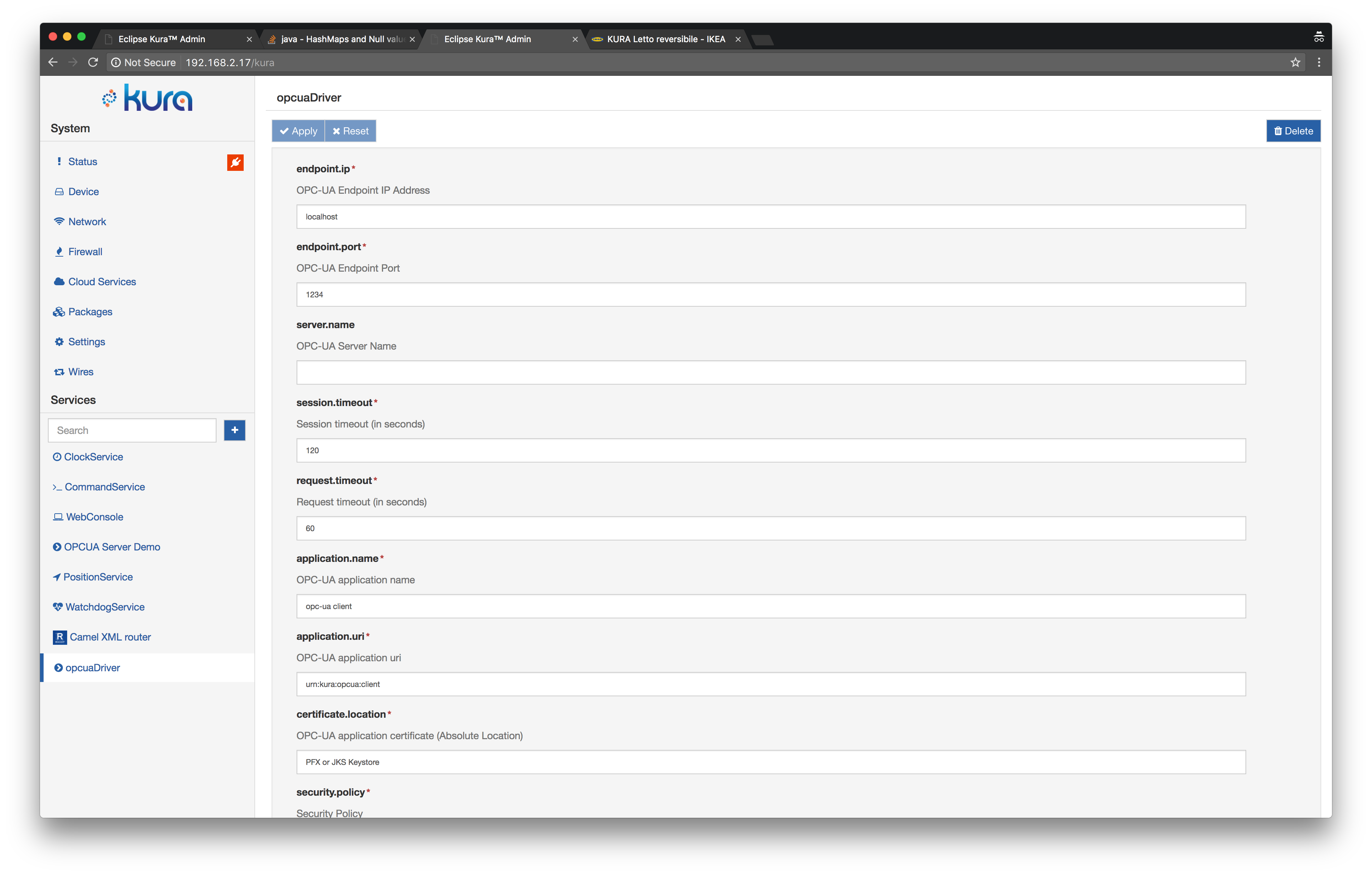OPC-UA Application
This tutorial will describe how to collect data from an OPC-UA device and publish them on a cloud platform using Wires. The OPC-UA server device will be emulated using a bundle running on ESF.
Configure OPC-UA server simulator
- Download the OPC-UA server simulator bundle and install it on ESF. It will create a simulated OPC-UA server that exposes some sensors (light, temperature and water sensor) and some actuators (buzzer, led and fan).
- On the Kura web interface, select “OPCUA Server demo” under “Services” and set “server.port” to 1234. Click “Apply” button. This will start an OPC-UA server on port 1234.
Configure Wires OPC-UA application
- Install the OPC-UA driver from Eclipse Kura Marketplace
- On the Kura web interface, add the OPC-UA driver:
- Under “Services”, click the “+” button
- Select “org.eclipse.kura.driver.opcua”, type in a name and click “Apply”: a new service will show up under Services.
- Configure the new service as follows:
- endpoint.ip : localhost
- endpoint.port : 1234
- server.name : leave blank

- Click on “Wires” under “System”
- Add a new “Timer” component and configure the interval at which the OPC-UA server will be sampled
- Add a new “Asset” with the previously added OPC-UA driver
- Configure the new OPC-UA asset, adding new Channels as shown in the following image.

- Add a new “Publisher” component and configure the chosen cloud platform stack in “cloud.service.pid” option
- Add “Logger” component
- Connect the “Timer” to the “Asset”, and the “Asset” to the “Publisher” and “Logger”.
- Click on “Apply” and check on the logs and cloud platform that that data are correctly published.

Updated 2 months ago
